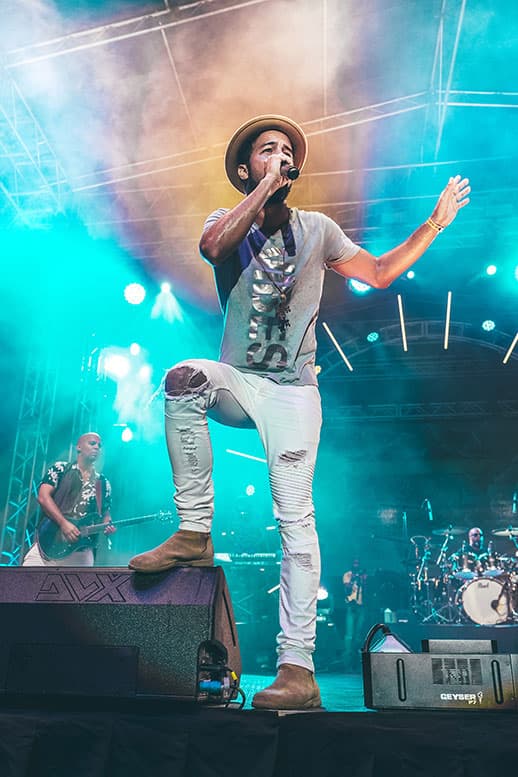Welcome to the behind-the-scenes world of Robot Relaxation, one of CodeJoy's most beloved shows! In this blog, we're pulling back the curtain on the creation and inspiration behind this unique program that combines coding, robotics, and mindfulness. Amanda Jeane Strode sat down with Matt Chilbert, co-founder of CodeJoy, to delve into the origins of Robot Relaxation and explore its impact on classrooms. Join us as we step into the CodeJoy classroom, where Elby and Kiki, our charming robot friends, are waiting to guide teachers and students through an innovative learning experience that addresses both technical skills and emotional well-being.
 Amanda Jeane Strode (AJ): What is Robot Relaxation?
Amanda Jeane Strode (AJ): What is Robot Relaxation?
Matt Chilbert (MC): Robot relaxation is CodeJoy's second show that we created. It is a show about a robot with test anxiety and we are helping by creating relaxing images for this robot. This show features one of our very favorite robots here at CodeJoy. Her name is Kiki and she is a very nervous but very lovable robot.
AJ: Where did the idea for Robot Relaxation come from?
 MC: We always have a different drive with every one of our shows. For this show, we ask ourselves a different question when we start the show. The question that we asked for this show was, "Can we make coding relaxing?" So we were attempting to combine coding and robotics with mindfulness. And this was the result.
MC: We always have a different drive with every one of our shows. For this show, we ask ourselves a different question when we start the show. The question that we asked for this show was, "Can we make coding relaxing?" So we were attempting to combine coding and robotics with mindfulness. And this was the result.
 AJ: Was there more to the inspiration of this show? The personal element of it?
AJ: Was there more to the inspiration of this show? The personal element of it?
MC: Absolutely. Both Kelsey and I are former classroom teachers. I think one of the ways stress affected us was through our students. When we would see them stressed out, that was very upsetting. So, I think the reason this show is set in a classroom, and features the characters that it does, and has the storyline that it has, is directly inspired by our time in the classroom.
AJ: Since you and Kelsey were in a classroom, do teachers talk to you about the show in particular because it has a focus on SEL? From my own experience, I know SEL is a very big deal, especially post pandemic.
MC: So, often, teachers will request this show to help during those very stressful times in their classroom. One of the ways that this show gets implemented is during testing weeks. This is through the suggestion of a lot of teachers. This tends to be a really popular show around April-May when a lot of the standardized tests are happening and there's a lot of anxiety in the room.

AJ: Is there anything special about the creation of this show for you that you remember or want to share?
MC: I remember this being one of the more fun shows to shoot. From a production standpoint, something that's interesting about this show is that it has only one location, which is kind of rare for our shows. We tend to want to show a lot of different spaces, but this one takes place all in one classroom. It allowed us to really spend a lot of time on designing that classroom and figuring out how we wanted it to look. I think because this is one of our earlier shows, it really set the stage look of many of our shows going forward.
AJ: That reminds me of the classroom robots like Kiki! These bots look really different from Elby and his family, and they look different than the aerobics dancers. They're their own robot. So, how did you come about the design of the classroom robots?
 MC: We had designed the little bot which is Elby's design while at BirdBrain Technologies and it was a very popular design. Students and teachers wanted to recreate it, but it does have some limitations. It's actually because of the way that the two boxes sit on top of one another, it actually has a pretty limited range of motion and this adds some coding challenges. So it doesn't make for a great beginner robot. So I sat down to design a different type of robot with the basic idea that didn't have some of those physical limitations. And again using some of those same design principles in our classroom lesson plans. We wanted it to be something simple, and something that could be built in 40 minutes or less. We needed a robot with a whole range of right answers when it comes to coding and this little design was the result. One of the things that this design allows for, that the Elby design does not allow for, is the head has a much wider range of motion. It can look way up. It can look way down. It requires less glue, and it requires less precision during the construction in order to get a satisfying character.
MC: We had designed the little bot which is Elby's design while at BirdBrain Technologies and it was a very popular design. Students and teachers wanted to recreate it, but it does have some limitations. It's actually because of the way that the two boxes sit on top of one another, it actually has a pretty limited range of motion and this adds some coding challenges. So it doesn't make for a great beginner robot. So I sat down to design a different type of robot with the basic idea that didn't have some of those physical limitations. And again using some of those same design principles in our classroom lesson plans. We wanted it to be something simple, and something that could be built in 40 minutes or less. We needed a robot with a whole range of right answers when it comes to coding and this little design was the result. One of the things that this design allows for, that the Elby design does not allow for, is the head has a much wider range of motion. It can look way up. It can look way down. It requires less glue, and it requires less precision during the construction in order to get a satisfying character.
AJ: That leads me right into our new lesson! What can teachers do in their classrooms with this tiny bot lesson plan?
 MC: I think one of the things that kids want to do first when they create a robot, is they want to create a character, something that looks and feels alive. And this two axis system, where there is one servo glued on top of another servo, creates a very life-like character easily. We have found in classrooms that this makes for a really satisfying first project because kids are experimenting more with their code to bring this thing to life. The coding concepts they're employing are all different and creative because there's often this desire to see this thing look more life-like. So if they want it to move fast, or if they want it to move slow, or they want it to shake the way Kiki was shaking, they get to sort of create and solve their own coding challenges to create the character that they want to create. This lesson goes with our ethos here at CodeJoy, this is very different from a Battlebot. We're very different from a robot that is solving a particular challenge. We are connecting with the kids emotionally and asking them what type of character they want to create in the world?
MC: I think one of the things that kids want to do first when they create a robot, is they want to create a character, something that looks and feels alive. And this two axis system, where there is one servo glued on top of another servo, creates a very life-like character easily. We have found in classrooms that this makes for a really satisfying first project because kids are experimenting more with their code to bring this thing to life. The coding concepts they're employing are all different and creative because there's often this desire to see this thing look more life-like. So if they want it to move fast, or if they want it to move slow, or they want it to shake the way Kiki was shaking, they get to sort of create and solve their own coding challenges to create the character that they want to create. This lesson goes with our ethos here at CodeJoy, this is very different from a Battlebot. We're very different from a robot that is solving a particular challenge. We are connecting with the kids emotionally and asking them what type of character they want to create in the world?
AJ: Is there anything else special about this show that you want to share?

MC: There's a rule of threes in storytelling, right? When we had originally designed Robot Mini Golf, there were going to be three different obstacles that Elby went to. But, as it turns out, there was really only time for two. The same is true for Robot Relaxation. We had originally had three different little characters that we would visit. The first was Kiki, who was nervous that she was going to fail this test, and that's why she needed help relaxing. There was a second character, Robin, who when they get upset or stressed, they act out and they stand on their desk and start shouting. Then there was a third character, Gunther, was going to be a little robot that was sort of spacing out. He would sort of disconnect when stressed and would be looking out the window at this butterfly that was flying around outside the window. Designing and shooting that sequence was as much fun as it was to imagine. We just never got the chance to do it. I will say, I miss that every time we do this show. I really wish we got to hang out with Space-Case Gunther because I feel like that was me as a kid.
Want to bring Robot Relaxation to your classroom? Check out our Robot Relaxation page to find our Featured Project: Tiny Bot PDF and Contact Us to start the discussion!
